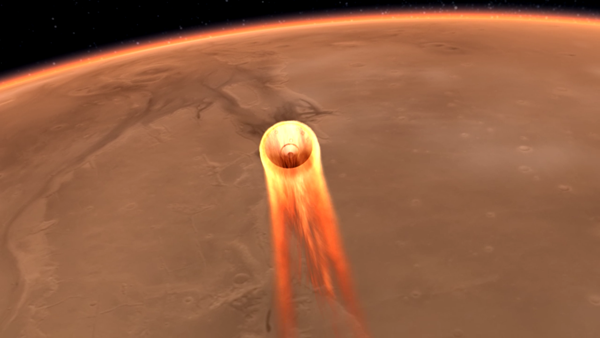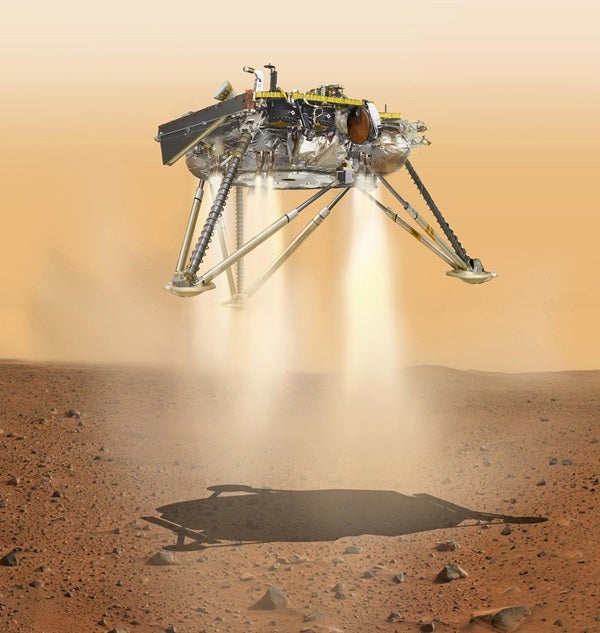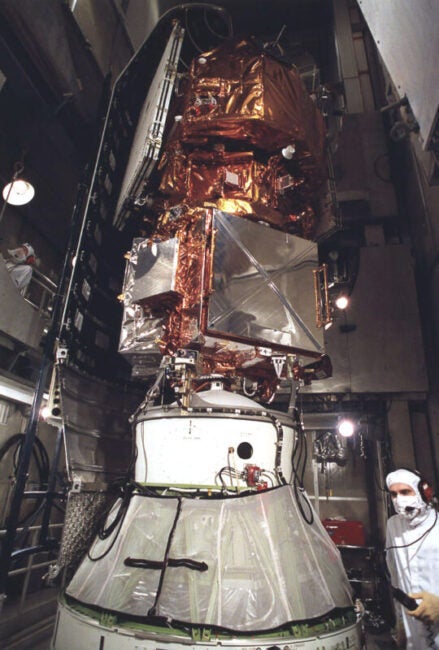InSight’s landing plan combines technology and techniques from past missions, aiming to successfully transport the 1,340-pound (608 kilograms) probe the 80 miles (128 km) from the top of Mars’ atmosphere to the surface. During the probe’s Entry, Descent, and Landing phase, it will enter the martian atmosphere at a speed of about 12,300 miles per hour (5.5 kilometers per second), with its heat shield reaching up to 2,700 degrees Fahrenheit (1,500 degrees Celsius) as the lander stays a comfortable room temperature inside its encapsulated descent stage. About three minutes and 7 miles (11 km) before touchdown, the probe’s nearly 39-foot (12 m) parachute will deploy, slowing the craft from 3,800 mph (6,100 kph) to 861 mph (1,370 kph).
Long-distance Landing
Why all the hype, when this is just another landing on Mars? Because despite all the careful calculations, technological improvements, and system backups, there is still only one chance to get this landing right. Everything, from the angle at which the probe first hits the martian atmosphere, to the exact time its three legs pop free, ready to absorb the shock of landing, must go right — and in the right order. What’s more, the current light travel time between Mars and Earth — the time it takes any signal sent from Mars to reach us here on Earth — is eight minutes seven seconds. That’s longer than the seven-minute landing sequence. The entire landing will have already taken place — and succeeded or failed — before we even know it has begun.
Add to that the fact that fewer than half of all attempted Mars landings have ended successfully, and it makes sense that there will definitely be some nervous energy as these events play out on another planet, with engineers blind to the process until it is complete. The only companions InSight will have are its two Mars Cube One (MarCO) CubeSats, and the Mars Reconnaissance Orbiter (MRO). Both MarCO and MRO will communicate with InSight via UHF radio signal, but while both will also send this information back to Earth (via the X band) following landing, only MarCO will be able to do so immediately. MRO cannot receive and transmit data simultaneously, so it is MarCO that will likely inform Earth first of the landing’s outcome. These two tiny CubeSats, each measuring under 15 inches (37 centimeters) along their longest side, will act as InSight’s personal messengers, proving that CubeSats can fill this vital communications gap on future missions to Mars (and other planets). They will also provide additional landing data and telemetry for engineers to analyze after the fact, aimed at improving future missions’ shots at successfully touching down on Mars.
You can stay up to date on InSight’s status by checking the mission’s Landing Status page, as well as by tuning in to NASA’s live coverage on NASA TV.










